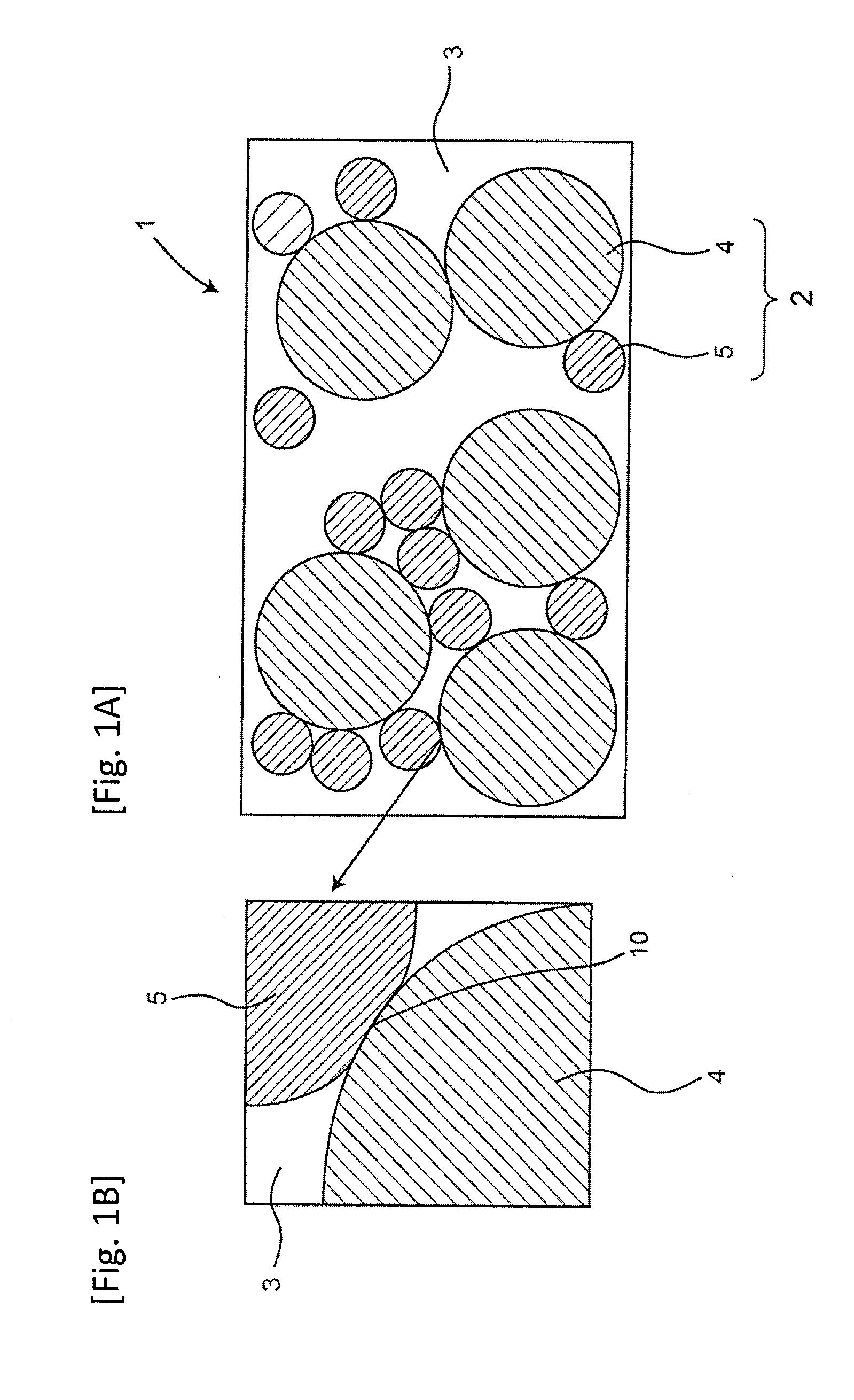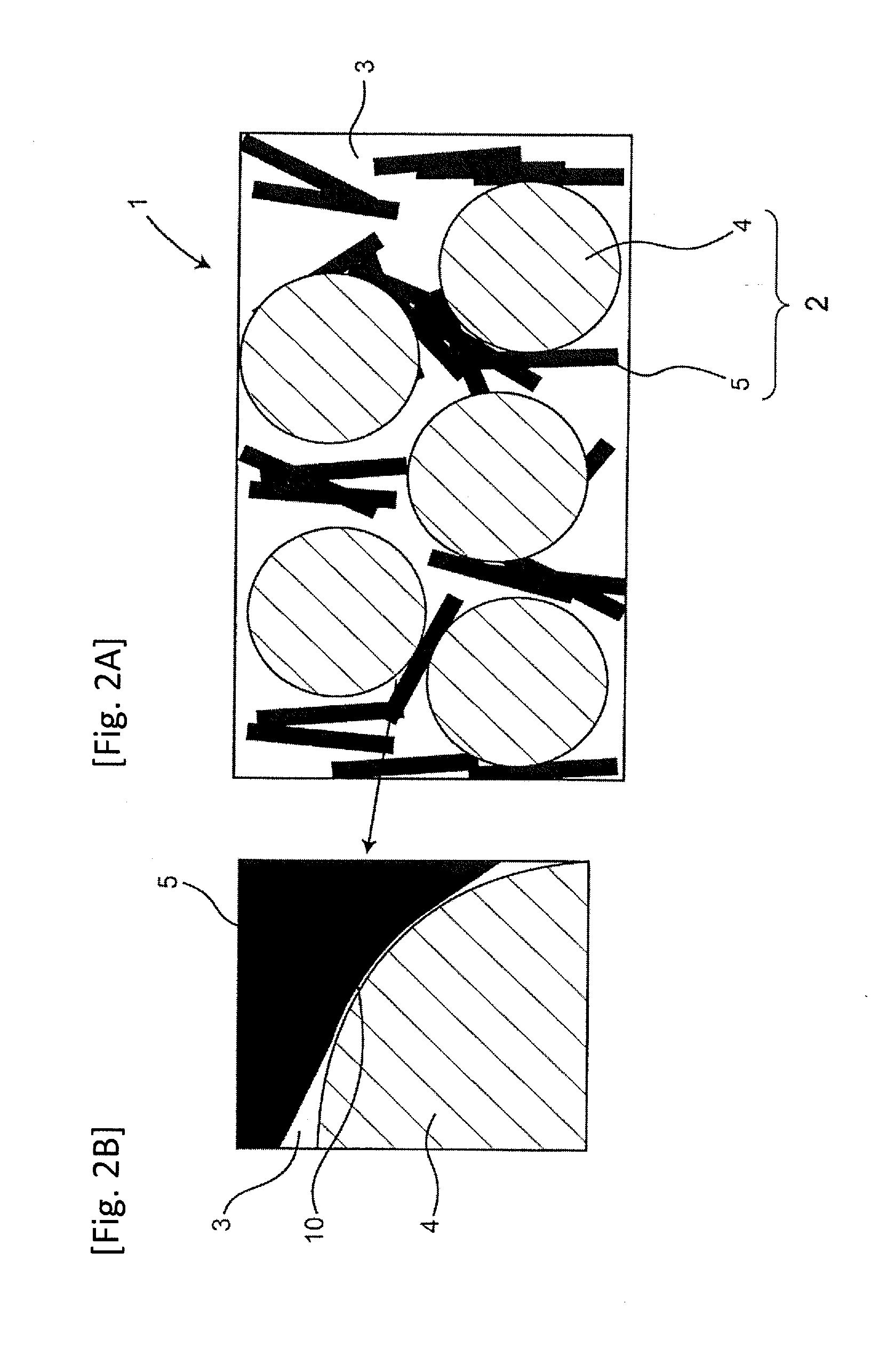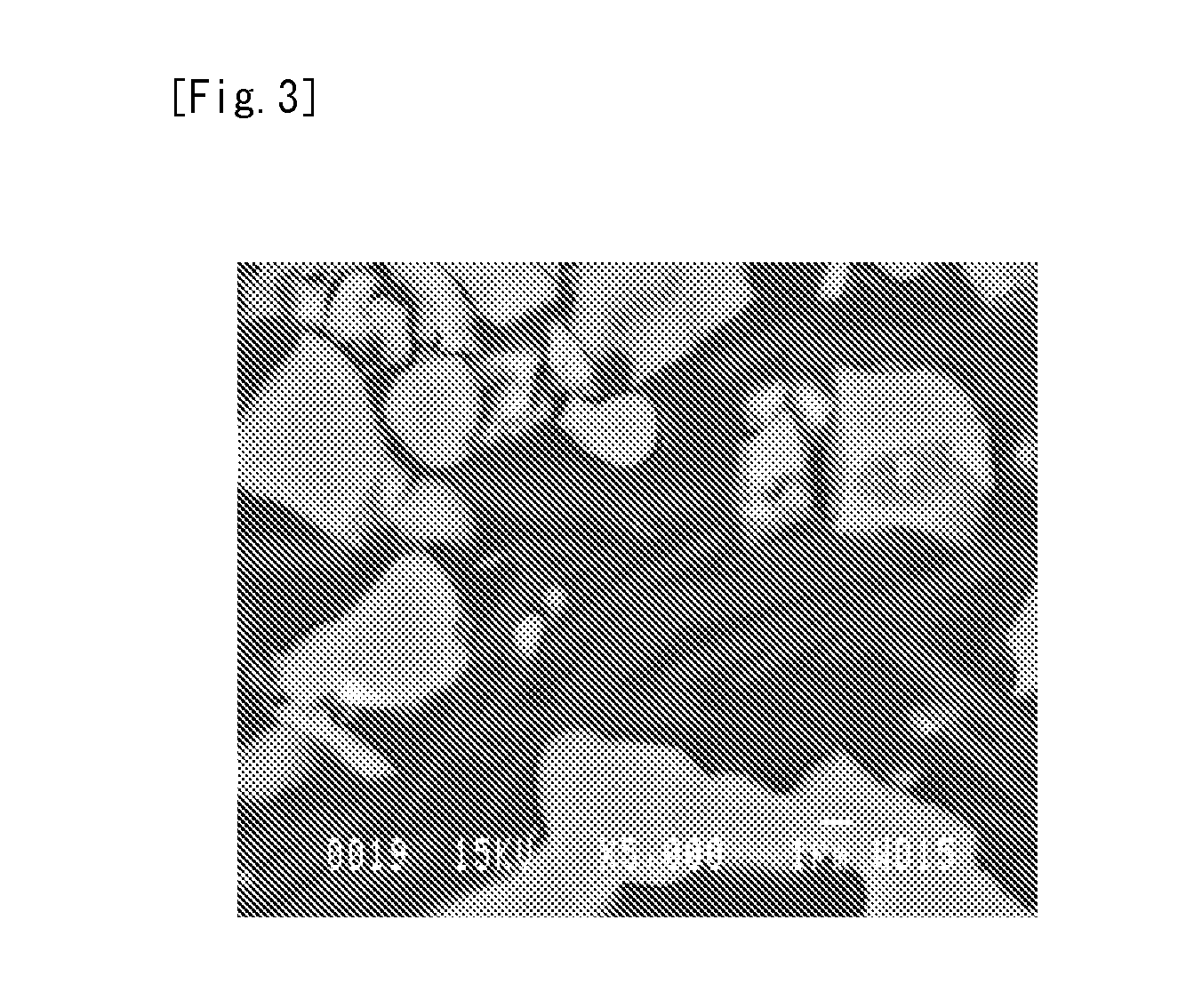Thermally conductive resin composition
a technology of thermal conductivity and resin, applied in the direction of basic electric elements, solid-state devices, chemistry apparatus and processes, etc., can solve the problems of poor molding, significant deterioration of moldability and workability, and deterioration of electronic parts performance, so as to improve the fluidity of the resin, improve the thermal conductivity, and form efficient thermal conduction paths
- Summary
- Abstract
- Description
- Claims
- Application Information
AI Technical Summary
Benefits of technology
Problems solved by technology
Method used
Image
Examples
production example 1
[0126]In the preparation of a compound, the following resin and inorganic fillers were used.
Epoxy-based acrylate resin: (NEOPOL 8250H, manufactured by Japan U-Pica Company Ltd.)
Magnesium oxide having a median diameter of 90 μm (Irregular shape: specific surface area of 0.2 m2 / g)
Magnesium oxide having a median diameter of 5 μm (Spherical shape: specific surface area of 2.2 m2 / g)
Boron nitride having a median diameter of 8.5 μm (Spherical shape: specific surface area of 4.0 m2 / g)
Aluminum hydroxide having a median diameter of 35 μm (Spherical shape: specific surface area of 2.0 m2 / g)
Aluminum oxide having a median diameter of 30 μm (Spherical shape: specific surface area of 1.7 m2 / g)
Mica having a median diameter of 30 μm (Spherical shape: specific surface area of 3.2 m2 / g)
[0127]The above magnesium oxide is produced by a dead burning method.
[0128]To an epoxy-based acrylate resin, a diluent, a mold releasant, a curing catalyst, a polymerization inhibitor, and a viscosity modifier were adde...
production example 2
[0132]In the preparation of a compound, the following thermosetting resins, thermoplastic resin, diluent, polymerization inhibitor, viscosity modifier, curing agent, mold releasants and inorganic fillers were used.
(Thermosetting Resin)
[0133]Epoxy-based acrylate resin (“NEOPOL 8250H”, manufactured by Japan U-Pica Company Ltd.)
Unsaturated polyester resin (“M-640LS”, manufactured by SHOWA HIGHPOLYMER CO., LTD.)
(Thermosetting Resin)
[0134]Polystyrene resin (“MODIPER SV10B”, manufactured by NOF CORPORATION)
(Diluent)
(Polymerization Inhibitor)
[0135]p-Benzoquinone
(Viscosity Modifier)
[0136]“BYK9010”, manufactured by BYK Japan KK
(Curing Agent)
[0137]t-Amylperoxyisopropyl carbonate
(Mold Releasant)
[0139]Chopped strand for BMC molding material reinforcer (“CS3E-227”, manufactured by Nitto Boseki Co., Ltd.)
[0140]Magnesium oxide having a median diameter of 90 μm (Irregular shape: specific surface area of 0.2 m2 / g)
Magnesium oxide ha...
PUM
| Property | Measurement | Unit |
|---|---|---|
| median diameter | aaaaa | aaaaa |
| median diameter | aaaaa | aaaaa |
| thermally conductive | aaaaa | aaaaa |
Abstract
Description
Claims
Application Information
 Login to View More
Login to View More - R&D
- Intellectual Property
- Life Sciences
- Materials
- Tech Scout
- Unparalleled Data Quality
- Higher Quality Content
- 60% Fewer Hallucinations
Browse by: Latest US Patents, China's latest patents, Technical Efficacy Thesaurus, Application Domain, Technology Topic, Popular Technical Reports.
© 2025 PatSnap. All rights reserved.Legal|Privacy policy|Modern Slavery Act Transparency Statement|Sitemap|About US| Contact US: help@patsnap.com



